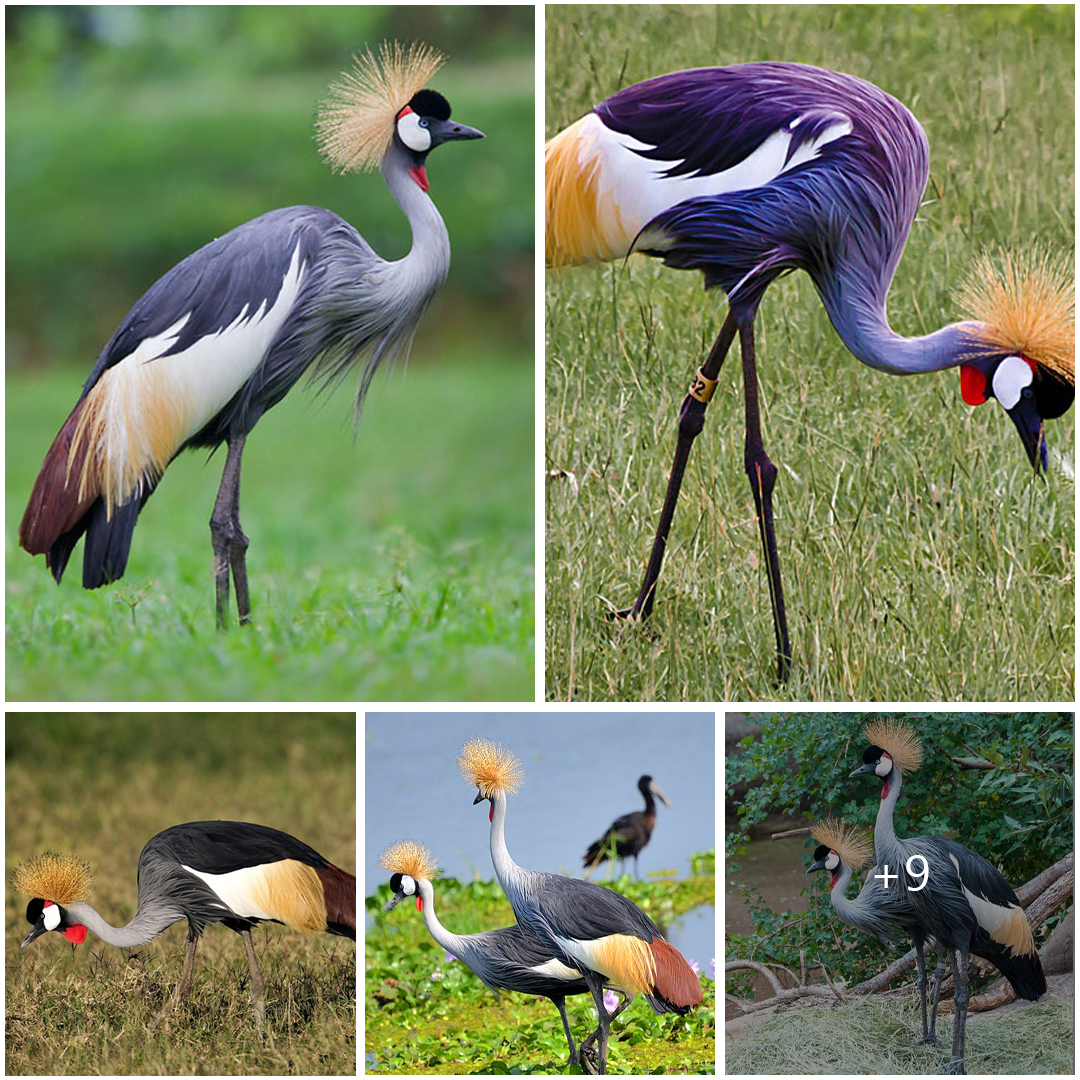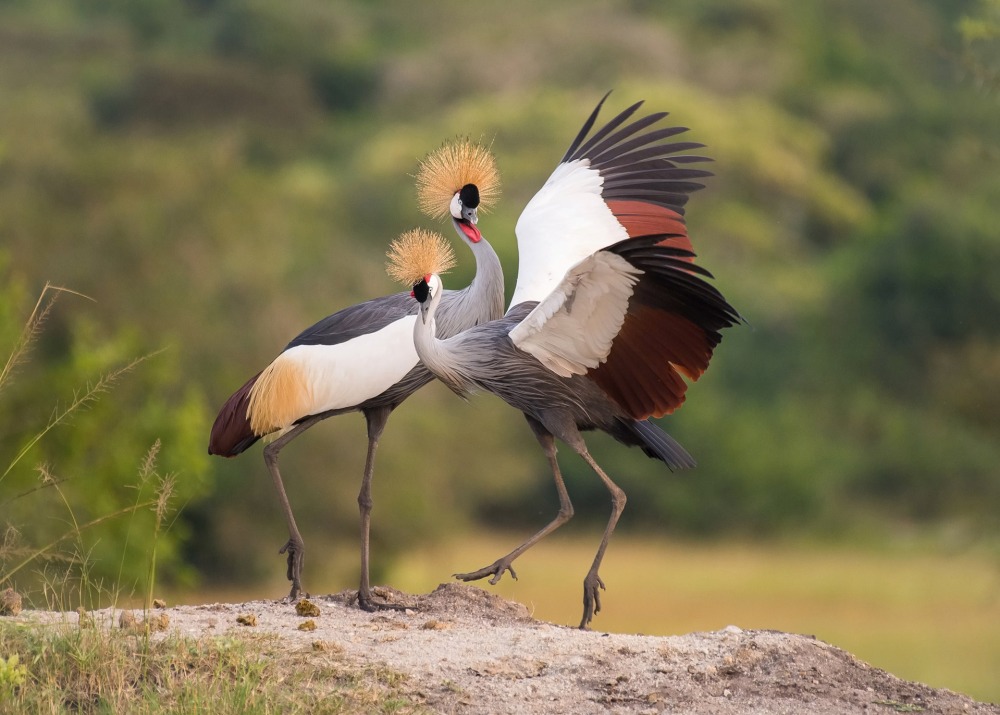
The Grey Crowned Crane: Majesty in Motion
The Grey Crowned Crane (Balearica regulorum) stands as a symbol of grace, beauty, and majesty in the avian world. With its striking appearance and elegant movements, this iconic bird captivates the hearts of birdwatchers and nature enthusiasts alike. In this article, we explore the characteristics, habitat, and significance of the Grey Crowned Crane.
Appearance: The Grey Crowned Crane is instantly recognizable by its regal appearance and distinctive features. Its most prominent feature is the crown of stiff golden feathers atop its head, which gives the bird its name. The rest of its plumage is primarily grey, with white wing feathers that form a striking contrast against the darker body. During courtship displays, the Grey Crowned Crane’s plumage takes on vibrant hues of gold and red, enhancing its visual appeal.

Habitat: This species is native to the grasslands, wetlands, and savannas of eastern and southern Africa. It prefers habitats with shallow wetlands, marshes, and riverbanks, where it can forage for food and roost safely. The Grey Crowned Crane is often found in close proximity to water, as it relies on aquatic plants and invertebrates for sustenance. Human activity, including agriculture and urbanization, has led to habitat loss and fragmentation, posing a threat to the species’ survival.
Behavior: The Grey Crowned Crane is known for its graceful and dignified movements, both on the ground and in the air. It has a distinctive dance ritual, which serves as a form of courtship and territorial display. During these displays, the bird leaps and bows with outstretched wings, creating a mesmerizing spectacle for onlookers. The Grey Crowned Crane is also an adept forager, using its long legs and sharp bill to probe for food in mud and shallow water.
Conservation: Despite its cultural significance and aesthetic appeal, the Grey Crowned Crane faces numerous threats to its survival. Habitat loss, poaching, and illegal trade are among the primary factors driving population declines in many regions. Conservation efforts focused on habitat protection, law enforcement, and community engagement are crucial for safeguarding the future of this iconic species. In addition, raising awareness about the importance of conserving wetland habitats and reducing human-wildlife conflicts is essential for ensuring the long-term survival of the Grey Crowned Crane.
In conclusion, the Grey Crowned Crane is a symbol of beauty, grace, and majesty in the natural world. As an emblem of Africa’s wetlands and savannas, this iconic bird holds a special place in the hearts of people around the world. By working together to protect its habitat and address the threats it faces, we can ensure that future generations will continue to marvel at the sight of the Grey Crowned Crane dancing gracefully across the African landscape.





